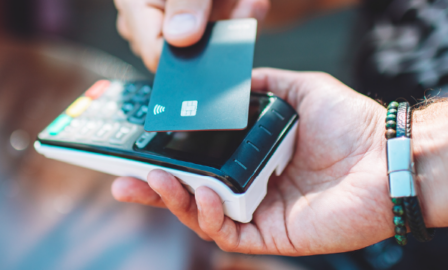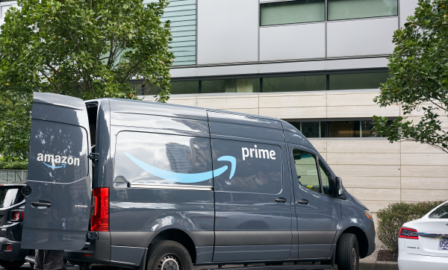Adapting Your Direct to Consumer Retail Experience to Meet Your Shopper Needs
Direct to Consumer retail is here to stay as growing consumer expectations have created the norm for buy anywhere, pick up anywhere, at any time. So, how do you ensure your brand meets shoppers where they are? As we focus in on the impacts from COVID-19, now more than ever consumers need direct delivery to their doorstep. According to an Adobe Analytics survey, 93% of consumers say they expect to shop online more (60%) or at the same level (33%) as they did before the outbreak. With that in mind, consumers care about the entire shopping experience and have placed even greater emphasis on digital-first offerings. CPG companies are continuing to evaluate the heightened importance of factors like convenience, transparency, availability, and community as they influence online purchasing habits.
We’ve highlighted some of the key steps in the consumer path to purchase that can improve direct to consumer retail sales. While each brand will have a unique consumer journey, these channels serve as a starting point to focus your organization where it matters the most for consumers both today and in the future.
Direct to Consumer Retail: Integrate Social Channels with e-Commerce Platforms
How can you ensure your social channels are integrated with e-commerce platforms?
Mobile commerce is expected to contribute to about 45% of total eCommerce this year. In addition, social has proven to be one of the most relevant purchasing channels during the COVID-19 crisis. That being said, it is critical for retailers to stay ahead of the curve by implementing a mobile strategy that will successfully engage consumers and drive them to a purchase.
One of the key drivers of mobile eCommerce is the integration of social channels into retailer eCommerce platforms. UGG, an American footwear company, has channeled Instagram through its various features to engage consumers to make a purchase through their profile. They actively engage the Story feature on the app to share new product drop announcements, behind the scenes in the making of products, as well as promoting their blog content.
Sell Where They Shop
Today’s consumer expects to find your product where they like to shop. To stay competitive, organizations should focus on strategically maximizing their reach across a mix of eCommerce channels, with the end goal of catering to consumer needs. This drives revenue while increasing engagement, and 74% of brands selling multi-channel see increased revenue. We’ve identified key considerations brands should make to evaluate their approach and capabilities in delivering multi-channel direct to consumer retail models.
Market leading brands are realizing the value of multi-channel offerings, and consistently refining and improving their approach. In consumer goods, Yeti Holdings is one of many examples of a brand successfully meeting consumers with products through multiple channels. In addition to physical retail, Yeti sells direct to consumer (DTC) on their website, through marketplaces like Amazon, and in online partnerships with retailers like REI, Dick’s Sporting Goods, and ACE Hardware. Pick a product category and you’ll find multiple brands implementing similar approaches.
With a planned multi-channel strategy identified, operationalizing this effort is key to capturing customer loyalty and delivering positive eCommerce experiences. Key operational pillars to sell through any eCommerce channel include storefront operations, order management, payment experience and processing, and fulfillment capabilities. Each new channel in the eCommerce landscape offers additional challenges and requirements to create a unified experience. Can your brand successfully create seamless experiences across multiple channels?
To answer the question above, a strategic evaluation of your readiness related to each operational category should be performed. To operationalize the payment capabilities required, payment capture, fraud prevention, card tokenization and refund facilitation processes are just a few core competencies that must be evaluated, planned and implemented. These must be in harmony with other operating considerations including order management, tax processing, distribution, and others. Adding sales and operations from third party channels increases complexity, but customer desire for seamless experiences and reliable performance remains consistent across all channels.
Build the Best Online Order Experience
DTC brands and retailers should be building an ordering experience that serves customers at every step of the purchasing journey. According to Nielsen, 72% of consumers are encouraged to buy online if the website provided real-time updates on their order status. Order experience drives conversion and customer satisfaction, including efficient product search and selection, online support channels, engaging product listings and reviews, simple path to purchase and strong post-sale experience. At the core, strong web design which engages and delights each consumer sets apart your DTC offering. Additionally, it is critical for eCommerce sites to provide transparent COVID-19 updates and impacts directly to consumers.
From the beginning of a site visit, the right online order experience starts with technology and features that help visitors find products. Site search that returns results quickly is often the starting point. Beyond predictive search capabilities, product recommendations, engaging web design and proper product attributes all facilitate the customer successfully discovering products.
On product pages, prioritizing consistent product information, customer reviews, and product imagery or videography conveys product value and trust to a customer. Glossier has curated their online presence through web design, video content, and social media campaigns that tie together a message of authenticity. Properly communicating product value, and providing trust indicators through reviews, descriptions and other information engages buyers to deliver enjoyable purchase experiences.
With the right product identified, customers want a streamlined purchase path and clear checkout experience. This includes direct and simple call to action from a product page, transparency in shipping, pricing and data collection, and offering convenient payment options. When a user checks out, providing small features like address autofill, digital wallet payment providers, and clear shipping indicators all contribute to positive and successful checkout experiences.
Each individual step in the click path of an online purchase journey should be tailored to meet customer needs, delivering enjoyable customer experiences that also facilitate conversion.
To continue reading Adapting Your Direct to Consumer Retail Experience to Meet Your Shopper Needs, download the full eBook.
Subscribe to Clarkston's Insights
Additional contributions by Spencer Anderson and Shatakshi Shekhar.



